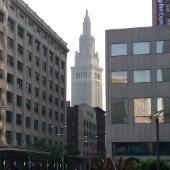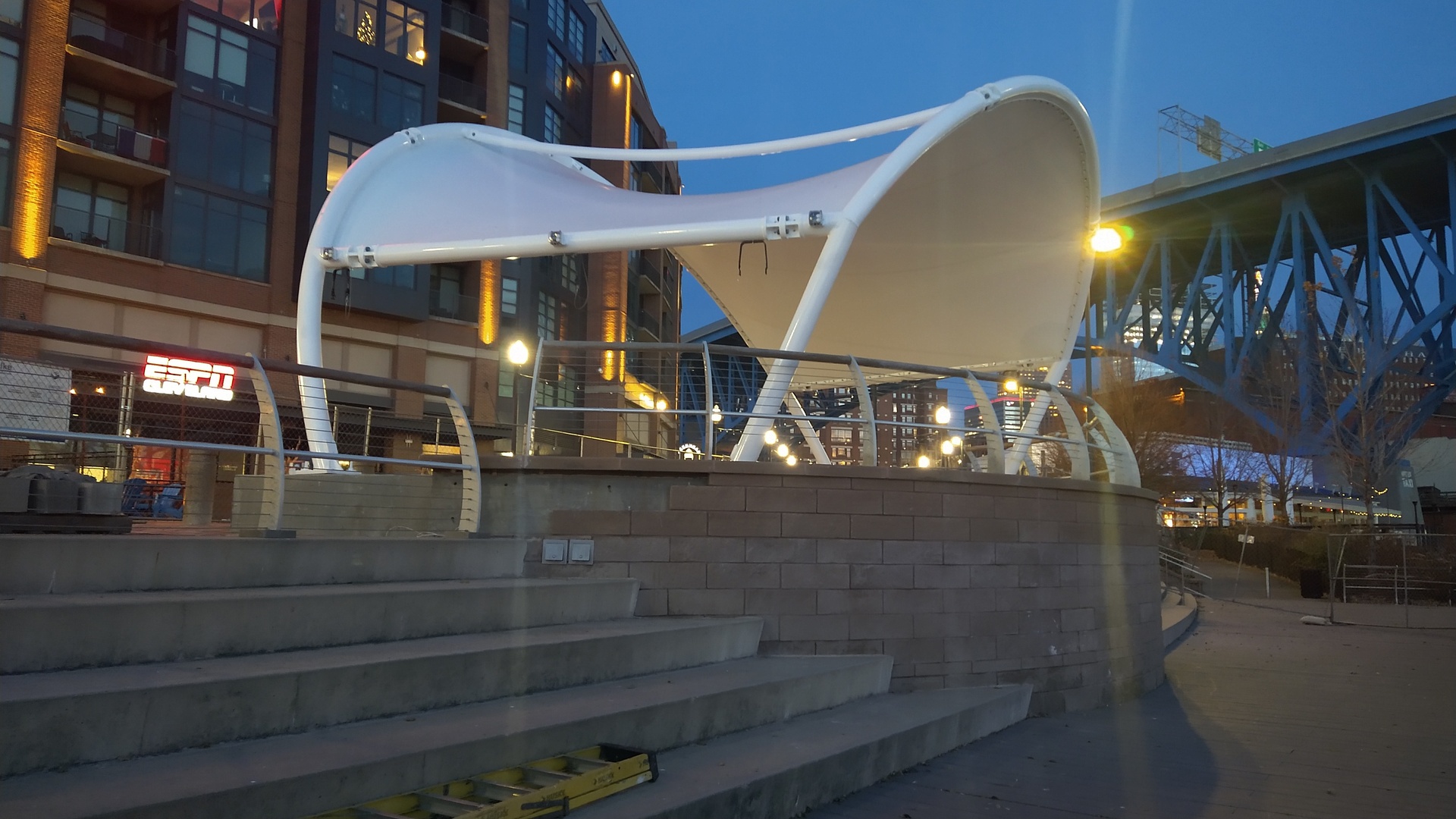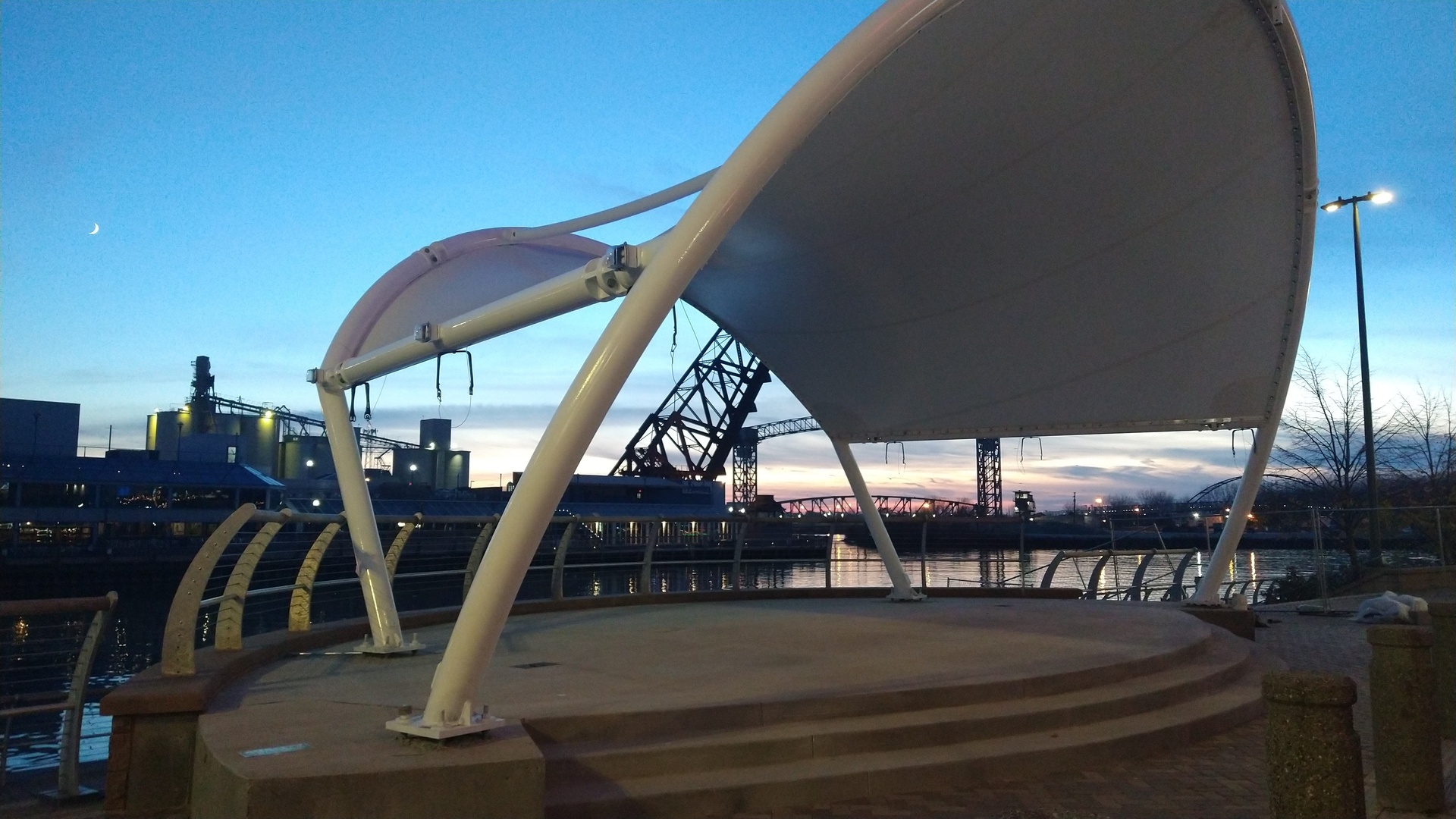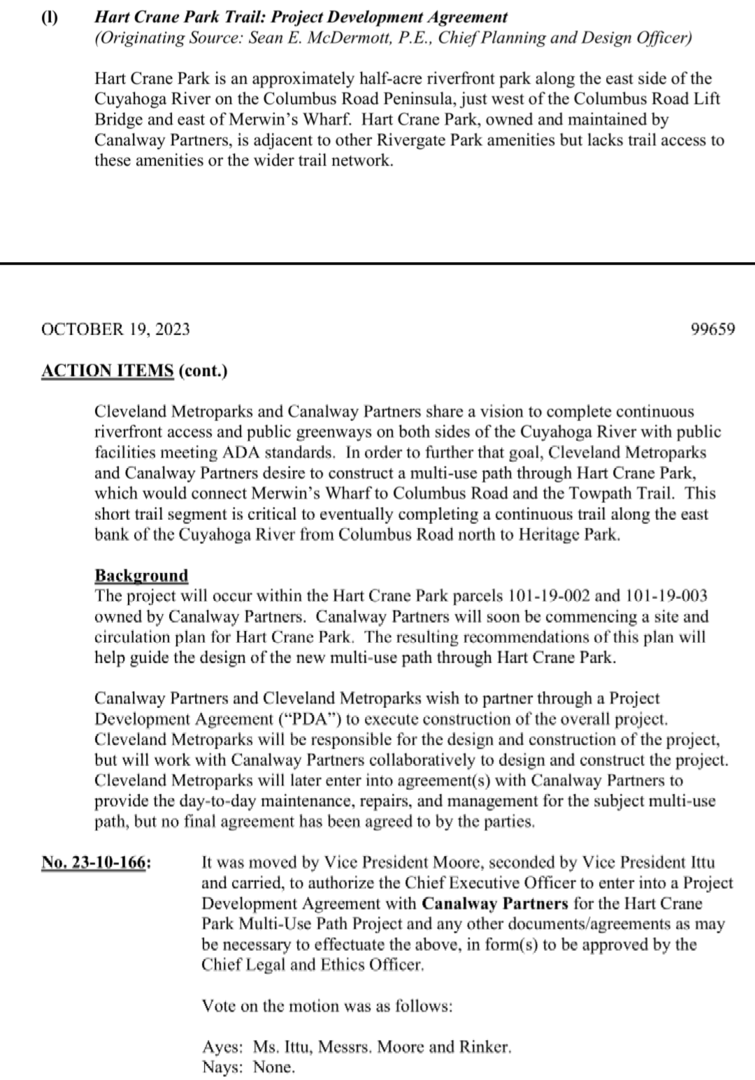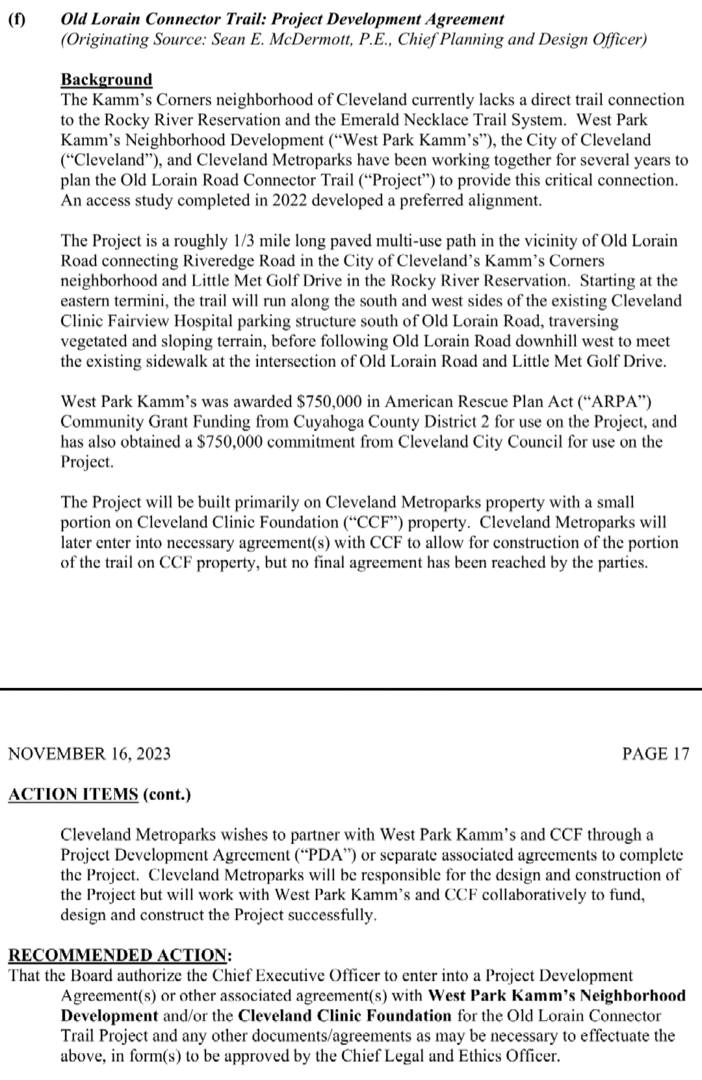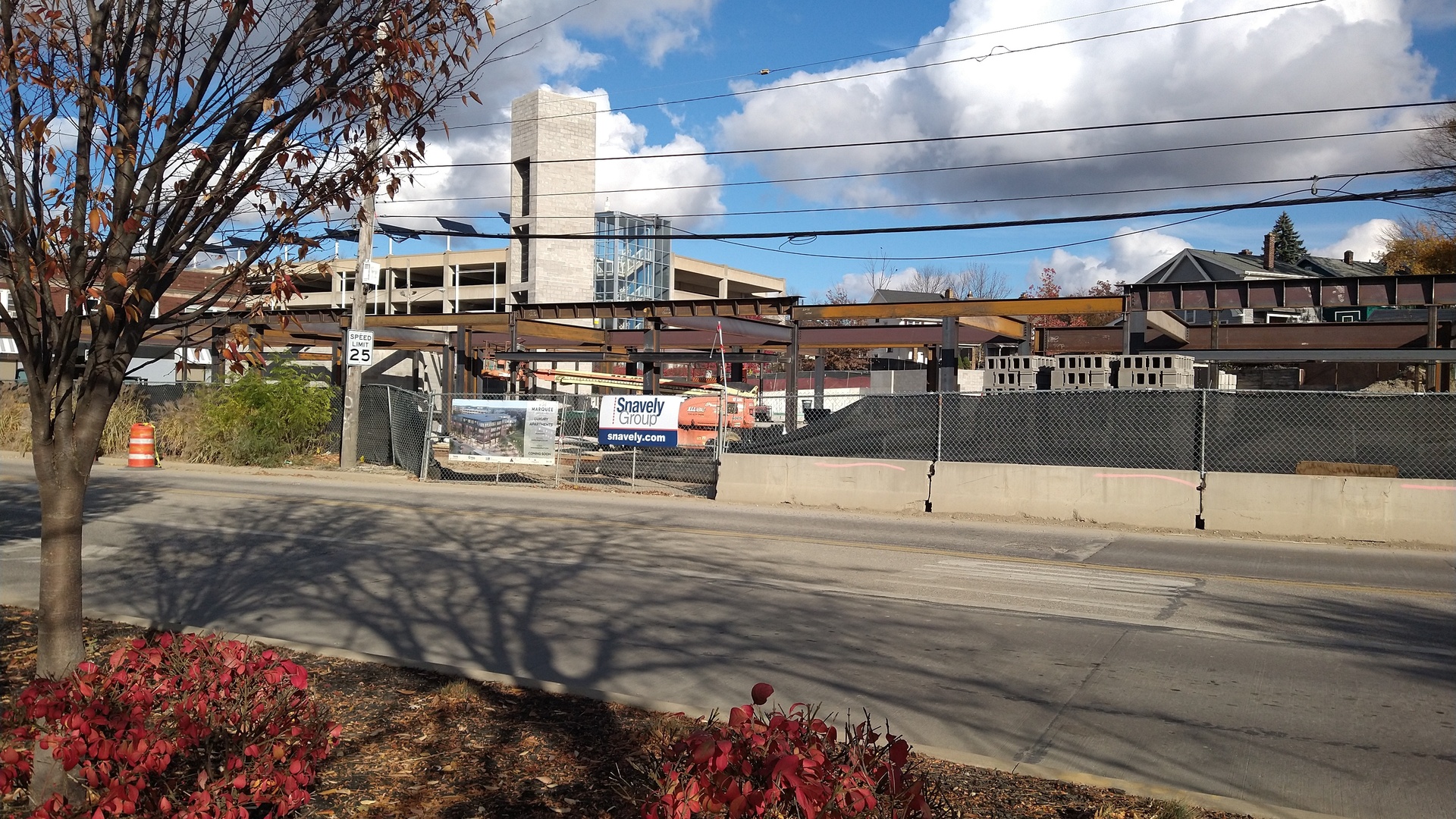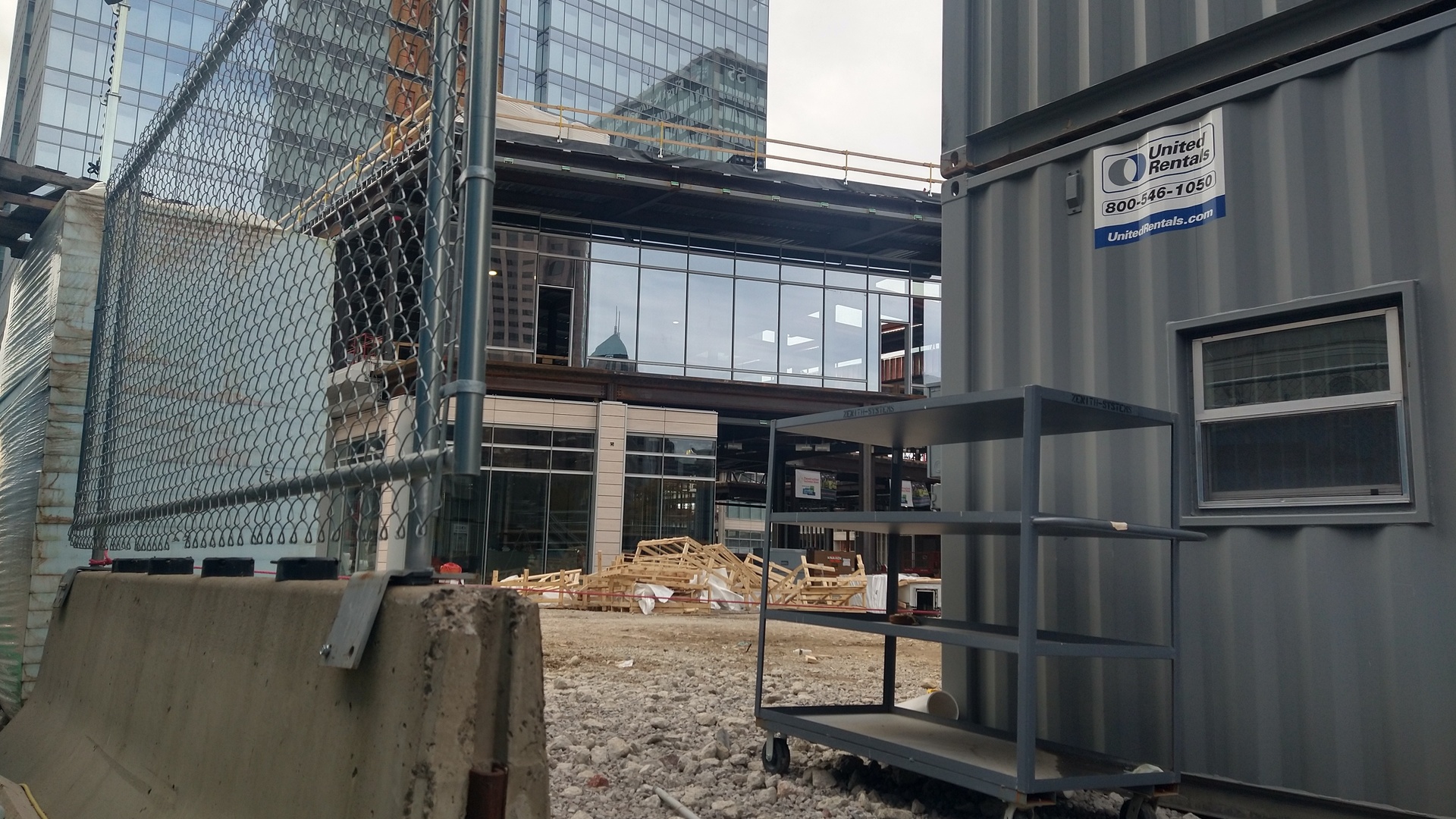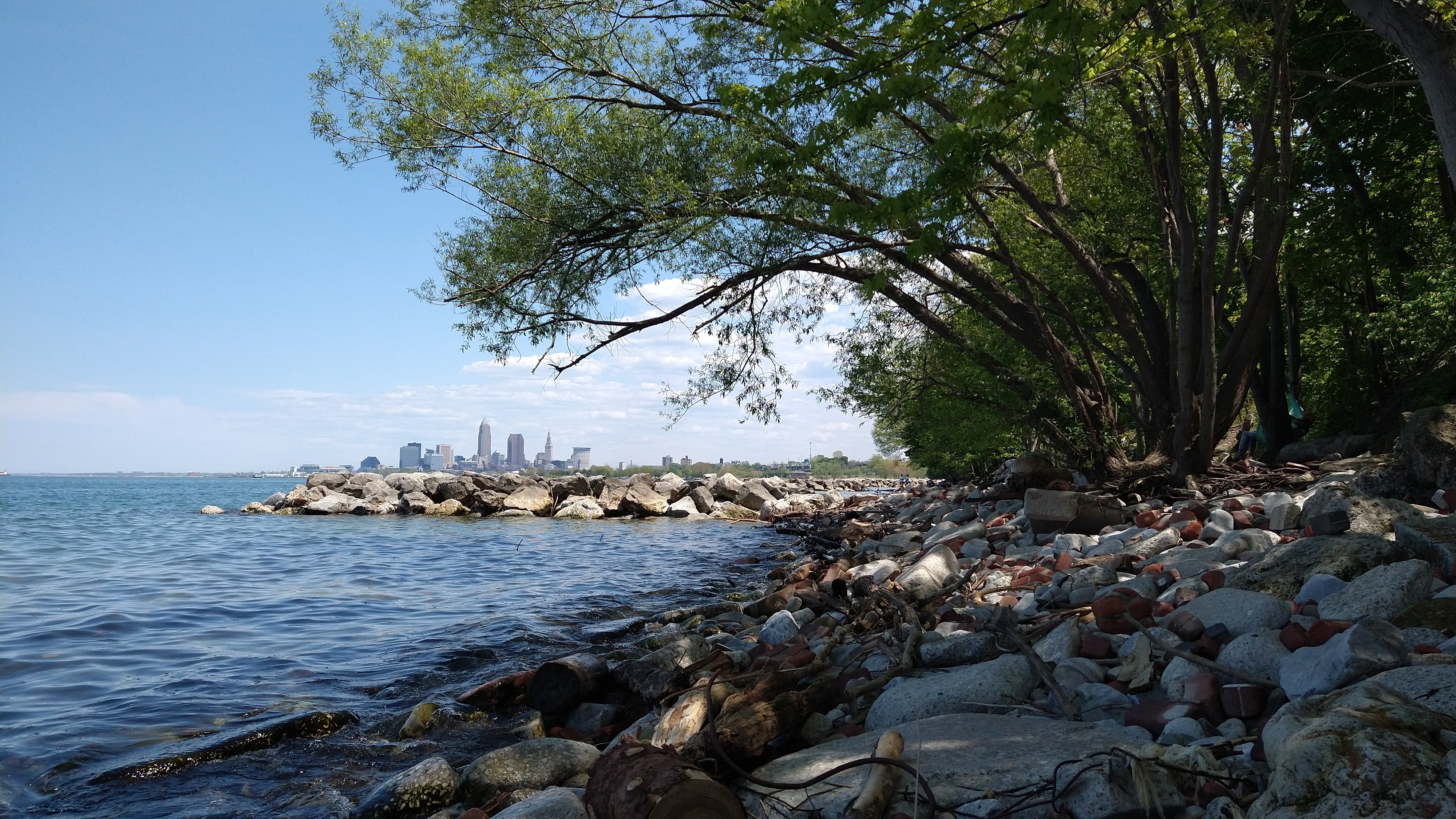
Everything posted by Ethan
-
Cleveland: Random Development and News
I'm not sure I have any special insights, but I agree with that assessment. Zimmerman's quote in the article certainly makes things seem that way, "we expect the bold vision supported by the generated funds will champion many transformative public initiatives along our waterfronts, made possible through close collaboration of the many partners and agencies working together." That in combination with the article using Detroit Shoreway as an example makes me think that a good portion of these funds go towards Metropark aligned goals such as better connecting existing parks to residents through trails and bike lanes. I could very easily see the city using these funds in such a way that will benefit the metroparks at least as much as metroparks could do with there share of the money alone. Right now I think the City and Metroparks' visions regarding infrastructure are roughly aligned. If that continues you just have to assume competency and good faith on the part of the city for me to think this will likely be a wash to even a beneficial trade. Unfortunately, I'm not confident in either of those assumptions, but I am hopeful. Edit: @Luke_SSone quick math, from the article, the total pot of money is about 133 million, of that only 15 million is coming from the Metroparks. That's about 11% of the total. If this all ends up going to infrastructure my guess is that at least 15% will go to bike/pedestrian infrastructure, and I wouldn't be surprised if it's closer to 20%. Assuming that is the case I think it's fair to say the Metroparks will come out ahead as broadening the bike/walking trail network inherently aligns with the Metroparks goals This is particularly true if the City continues to develop the lakefront and follow the Vision for the Valley, as these two goals are high on the priority list for both entities and do a lot to keep them aligned. Not to put too fine a point on it, but I think there's a good chance more money will end up going to Metropark aligned goals than the 11% that would have otherwise gone to the Metroparks. This is without even mentioning that there are some things that both entities may desire that it will be easier for the city to accomplish. So, all in all, I'm optimistic with regards to the effect on the Metroparks.
-
Cleveland: Random Development and News
I can see both sides as well. At first I thought the article was just talking about standard TIFFs, but after it got into the meat of the problem I think there's a real tough problem there. On one hand, I think it's unambiguously clear that Cleveland needs infrastructure investments, so the stated goals for redirecting the funds seem laudable. On the other hand, it's incredibly easy to imagine these funds turning into a pork-barrel slush fund for projects (or developers) favored by the city. And there's also a good argument that the money should by default go to where taxpayers directed it. Ultimately, I think which side of the issue people are going to come down on depends on how much they trust the city to be a good steward of the funds. Put to good use this money could do a lot of good. Personally, I'll take a wait and see approach, and choose to be cautiously optimistic until the City proves me wrong. Though if I'm being honest, I kind of expect to be proven wrong, but I hope I'm not.
-
Ohio Intercity Rail (3C+D Line, etc)
I don't disagree, but I also think that it's likely the case that adding rail to Chicago will increase the number of total trips between the cities, in a way that I don't expect for the three C's. I expect the 3C&D line to take some percentage of the cars of the road depending on the level of service, whereas I would expect quality rail service to Chicago to result in Ohioans taking more trips to Chicago.
-
Lakewood: Development and News
If by steady you mean steady state, then I agree. I think the market is basically saturated at this point, every new successful brewery is probably going to push out another less successful one. Not a bad thing, just what it is.
-
Ohio Marijuana News
For what's it's worth, that describes me, and given the margin it passed with, I would bet at least half of the people (who bothered to read the text) found at least something in the bill they would have preferred to be different. I voted for the bill, but my honest reaction when reading the text was that the initiative shouldn't have been allowed as written. Initiatives are supposed to cover a single topic. I felt like there were at least two bills in initiative, one legalizing marijuana, and one or more describing how the funds should be spent. Personally I would have preferred the bill have stuck to legalizing recreational marijuana and all that entails, home-grow, THC limits, etc, and kept the kept the logistics and economics to a minimum. I just don't like the idea of having to take up or down votes on overly complicated legislation. That's what representatives are for. They can debate the merits of the minutia, and propose amendments. I understand our current elected officials aren't as representative as they should be for reasons beyond the scope of this thread, but I still maintain that it's best to keep initiatives simple. Anyway this is a long way of saying I voted for issue 2 because it legalized recreational marijuana. I wasn't a fan of everything else in the text, but it wasn't enough to dissuade me. I don't think I'm very unique in this respect, either because people didn't even bother to read the specifics, they didn't care one way or the other, or didn't like them but voted yes anyway. I also don't think there is really anyone who voted yes, but wouldn't have voted for a simpler version of this bill. People made their decision based on the core of the initiative, that is, legalizing recreational marijuana. Our representatives should respect that and not substantially alter stuff like THC limits, etc. I admit I don't really have an issue with them fussing with stuff like taxes and directing funds though as I just don't think it was really what anyone was voting on, it was simply bundled in.
-
Electric Cars
Mostly agreed, that's why I didn't buy an electric car, but price is coming down (fairly quickly), and electricity is cheaper (and less variable) than gas. I expect the economic case to flip in the next few years as costs come down (and chargers become more available). Once that happens electric cars will no longer be a luxury item and will quickly become the majority of cars sold. Range isn't that much of an issue anymore. Basically all electric vehicles can drive for four hours straight (highway), and most can manage five. Assuming you can charge while you stop for a meal (which with current infrastructure isn't a safe assumption at all), most cars can manage most distances most people are willing to drive in a day. To my mind the issue is more the lack of charging infrastructure, not the range of the vehicles.
-
Amtrak & Federal: Passenger Rail News
An interesting thing to consider is that if this map comes to fruition, we will have a new set of largest cities without intercity passenger rail, as Vegas and Columbus (as well as Phoenix* and Nashville) are (potentially) in line to get service. Based on this list, it looks like Louisville and Tulsa are next in line for the crown of largest cities without intercity passenger rail. ( https://en.m.wikipedia.org/wiki/List_of_major_cities_in_the_United_States_lacking_inter-city_rail_service ) Given the speed these things move there's probably no reason to speculate on future connections to these or other locations at this time, but it's kind of fun, so why not? If any city gets added to the network in the next round of expansions however far off that may be, I would think Louisville makes as much sense as any. Connections to Cincinnati, Indianapolis, and Nashville all make varying levels of sense. Louisville to Indy was a proposed corridor last time, and I would think more rail into Cincy, and bringing rail into Nashville only makes the case for connecting Louisville into the network stronger, so i have to imagine Louisville is next in line or close to it. A connection from Oklahoma City to Kansas City via Tulsa also makes sense to me. Overall I think the selected (or perhaps more accurately applied for) corridors make sense. The other potentially interesting question might be what are the largest "snubs" (or deserving unapplied for corridors)? While not probably not a productive exercise, I'm curious about the opinions of those on the forum more educated on the topic than me.
-
Cleveland: Downtown: Tower City / Riverview Development
I currently live in the apartments in terminal tower, and I've heard no such rumor. A new leaky pipe opens up in the parking garage every month.
-
Ohio Marijuana News
There's a good faith and a bad faith way that legislators could "tweak" the passed initiative. Where exactly that line aught to be drawn isn't entirely clear, but some of the comments from Republican leaders definitely seem to cross it. If I had to draw that line it's whether or not it touches the central part of the initiative or not. In this case I think that means the stuff that explicitly deals with marijuana, so THC limits, home grow, possession amounts, etc. This is what most people based their vote on. The other stuff, taxation amounts, where the money should go, etc, may still be important, but I doubt it impacted much of anyone's vote. Clarifying things that weren't even in the amendment (since it's quite a bit shorter than most laws) is of course also fair game. Not that I'm saying legislators should or need to tweak the amendment, just that there is a reasonable good faith version, and a bad faith version. The bad faith version explicitly spits in the face of the electorate, and I imagine they'll pay the price for it eventually.
-
Amtrak & Federal: Passenger Rail News
Why? 7-12 years seems absolutely ridiculous, especially since Amtrak is utilizing existing infrastructure even for new service. 12 years seems like a fairly long time even if they were laying new lines. I understand everything takes way longer than it should in English speaking countries, but I just can't understand these time frames.
-
Cleveland: Transit Ideas for the Future
Cool proposal. Though it seems like it's going out of its way to make a loop even when it probably doesn't make sense. Boston to Montreal is fairly suspect, and connecting Detroit to DC prior to connecting Detroit and Chicago also seems like a decision that only makes sense if the goal is to make a loop. I'm no expert, but I'm not sure how much value is added by looping intercity trains, I'm sure some, but probably not enough to justify a sub-optimal routing. For example Alon Levy's proposal goes NYC to Montreal through Albany, that destroys the loop concept, but I think would make more sense. Also there's some disagreement and errors with the maps. Youngstown is shown as a stop on the physical map, but not on the subway style version. Also, Ann Arbor is in the wrong spot. Very cool idea though, and fun good for thought!
-
Cleveland: Crime & Safety Discussion
Shots fired at public square. 15 minutes to a half hour ago. At least two hit.
-
Cleveland: St. Clair-Superior (non-Asiatown): Development and News
I was a bit skeptical of the mid way concept until I visited Tel-Aviv and saw the gorgeous bike mid ways they have there. What really sold me on them was the fantastic trees and how they shaded the whole street. Putting the bike lanes there made sense. It didn't feel like an afterthought, or a strange decision. However after seeing the actual proposed plan I'm less excited, and less sure about the proposal than I was. It just seems like it's trying to be too many things and please too many people. One of the first victims is the trees. In many areas the planting strips shrinks to a small width, (usually due to turn lanes) or disappears completely. It does this at basically every intersection. I'm probably exaggerating the problem, but without the trees I fall back into the camp of why is this in the median at all? Superior is a very wide street. It's certainly wider than it needs to be right now. But it's not wide enough for a dedicated bike median with trees, a bus lane, car traffic, and street parking. Something is going to have to give. The whole point of this rearrangement is for bikes, so it doesn't make sense for that to give. Trees can give, but then I don't see the benefit of having the bikes in the median at all. I don't know enough about the car traffic, bus traffic, or parking requirements down Superior, but honestly at least one, and probably two, of those is going to have to give for this street to be redone with a Nice bike focused median. Basically, we can't have it all.
-
Cleveland: Flats East Bank
-
Cleveland: Downtown: Sherwin-Williams Headquarters
That second pic is just gorgeous!
-
Cleveland: Flats Developments (Non-Stonebridge or FEB)
Bit in the Metroparks board meeting agenda about getting a boardwalk/trail in Hart Crane Park that will eventually connect to a larger riverfront trail "along the east bank of the Cuyahoga."
-
Cleveland: West Park / Kamms Corners: Development and News
-
Cleveland: Downtown: Justice Center Complex Replacement
It is sort of interesting that building looks so much better in black and white. My take is that it just goes to show how much finishes (and color) matter. Imagine if the whole building was clad in white marble, the shape would still be just as ugly, but on the whole the building would probably look much better. (Now add some detail work and you could have a beautiful building).
-
Ohio Marijuana News
I think it's interesting to compare the results from the two ballot issues. While they both got similar levels of support, the maps look very different. In general marijuana legalization was clearly a less regionally polarizing issue, support seems to be more equally spread out across the state. Contrasted with abortion which has very sharp lines and most counties either strongly supported or opposed it. It's also interesting to see which areas preferentially backed each issue contrary to their normal politics. Abortion garnered the support of a lot of the Obama-Trump voters in NEO, and in general looks a lot like the map when Democrats win in statewide elections. On the other side Appalachia turned out pretty strongly for legal weed, at least relative to their normal Republican lean. There are several counties that voted strongly against abortion, but for marijuana legalization.
-
Cleveland Heights: Development and News
-
Cleveland: Retail News
I'm a bit confused by the termination point of E12 place for potentially closing Huron. For one, that road bifurcates, so they could be referring to one of two points, I'm assuming the one closer to the Crown Plaza. Additionally, E12 is an alley... Weird place to end a road. It seems like they might as well close from Euclid to Prospect, leave it open to maintenance vehicles, and maybe deliveries, but otherwise if you're going to close it, might as well close it. Edit: I now assume it's to maintain access to the Halle Brothers Parking Garage... Which also has an entrance on Prospect, so yeah close it all down.
-
Cleveland-Akron: Bicycling Developments and News
^ For anyone not a cleveland.com subscriber. It looks like the same article is on msn https://www.msn.com/en-us/news/other/don-quixote-of-cleveland-city-planning-holds-tight-to-dream-of-extending-red-line-greenway-across-cuyahoga-river/ar-AA1jtRja Edit: Here's the promotional YouTube video. Further edit, my thoughts: It's an interesting idea. I'm not opposed, I'm just not sure that it's a) the best use of the space on the viaduct, and b) the best use of the funds it would require.
-
Cleveland: Downtown: Justice Center Complex Replacement
This is a really good point, get the city to fill in the less desirable lots. But more than that--city development here could also make mixed use development in nearby lots (such as the northern end of the warehouse district, or the northeast edge of the flats) more attractive since there will be more "boots on the ground" so to speak. If we convert the shoreway to a boulevard there will likely be a few more developable parcels in this area as well, only adding to the above statement, so even more reason. Also, if we do develop this area, I really hope the city considers adding a pedestrian/biking trail from North Coast Harbor to the East Bank of the Flats. This is a critical missing link as far as I'm concerned, and as both areas continue to develop the need for a quality link will only increase.
-
Cleveland: Downtown: Sherwin-Williams Headquarters
-
Cleveland: Downtown: Justice Center Complex Replacement
Alternatively, Paris... Most European cities are filled with 4-8 story buildings and are still very dense. It's also right next to the warehouse district which is full of 4-6 story buildings. It looks like the shortest proposed buildings here are about 5 stories, and the tallest is about 13-14. (It's hard to tell from the picture, and I think it's more of a vision than a proposal). I can understand preferring a skyscraper, but let's not get too melodramatic.




